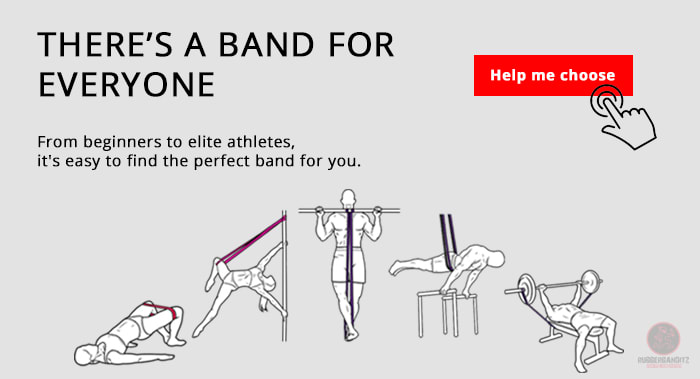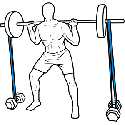Flopping for a reason - How to Do a Kipping Pull Up And Why You Want To Do a Kipping Pull Up
Today, ladies and gents, it is my responsibility to make a few enemies in writing this article. If you have been an avid reader of my articles, I’m sorry, but I’ll likely lose half of you today. All I ask is that despite your reservations, you at least hear me out for the entirety of this article.
Today’s article is on the kipping pull up, or butterfly pull up.
Yes, I flinched as I typed that, waiting for a strict pullup overlord to pop up out of a corner I wasn’t paying attention to and throw something at me.
That being said, I am of the belief that (nearly?) every exercise has some merit in some context for some people, and I don’t see the kipping pull up as an exception to that rule. Obviously, the first question you have is, well…
Should I be doing kipping pull ups? And if not now, when?
Patience, young ones. Before I address you personally, I think we should establish how and why the kipping/butterfly pull up (yes, the term is interchangeable, and we will discuss the minimal differences between them) came to be. And thus, we begin our history lesson and story time:
In the 90s, CrossFit became a thing that changed fitness forever. The competition rules simply stated that a complete chin up repetition meant chin above bar, and as such, competitors used the grey area of how to get their chin above bar to their advantage. Intelligent for competitors trying to get an edge in a sport, but how does that play out for little old you?
Well, I would say simply enough. My thoughts on this are that elite CrossFit competitors are athletes with (often) decades of training experience and adaptation, and my assumption is that a majority of my readers are beginner-intermediate trainers (this term is used scientifically, not to belittle, meaning you are likely at less than 5 years of solid training). If we compare their base to yours, most CrossFit competitors will have very strong, high rep sets of chest to bar pull ups, as this no doubt makes its way into most of their training programming in preparation for competition.
Without aiming to single anyone out, it is now worth asking yourself candidly how to compare? Let’s say you can do 5 strict reps compared to a CrossFit competitor who can do 20 reps, we would assumptively say that you have 25% of their capacity to handle force, volume and other factors associated with this movement.
So should the average person use kipping pull ups?
(This is where you expect me to give you a flat out no, but that would be going against my sometimes principle that I opened with, wouldn’t it?).
In my humble opinion, kipping pull ups and butterfly pull ups should be used if:
- (1): You are a competitive in CrossFitter and are competing or striving to tackle the pullups in your WOD
- (2): You are trying to be (1)
- (3): You are an intermediate/advanced trainer who can handle large amounts of strict chest to bar pull ups and would like variety or additional volume within the realms of what you can handle*
* On average, for muscle growth or strength growth there are often better and safer ways to do this.
And that, ladies and gents, is the how and why of the kipping/butterfly pull up, at least from my perspective.
This is when some of you want to falter and disappear.
But aren’t kipping pullups a good progression to learning normal pull ups?
But won’t kipping pullups add volume to my workout, and doesn’t volume grow muscle?
But I want to be good at Crossfit, and I have 20, 30, or 50 rep sets of pull ups that I have to do. How could I possibly do these without kipping or butterfly pull ups?
(1) Kipping and/or butterfly pull ups as a progression to normal pull ups
The logic here often goes: “Well, I’ll swing less over time and eventually be strong enough to not swing at all”. Pretty sound looking logic, honestly. A few years ago, I’d have been fooled by it.
But here’s my take on that:
When swinging and using momentum to chin up, you’ll have to catch that momentum on the way back down. Yes, our body is stronger when eccentrically loading (coming back down from a movement), but often, if we can’t generate the force to chin up, we can’t absorb the impact from a swing like that on a kipping or butterfly pull up so it puts your shoulders in jeopardy.
Yes, there will be a few this could work for, but instead look at absorbing impact in a less dramatic way by doing negative chin ups, where you begin chest to hands and head above the bar and end up at the bottom position. This will give you the potential benefits of kip or swing without the added injury risks.
(2) But kipping pull ups mean more volume and a bigger back!
Yes, well maybe. This at least means you know that volume, intensity and frequency exist, and that volume has some correlation to muscle growth. Actually, very overlooked and underrated.
However, if we circle back to the potential for injury risk again, and then consider doing these to “add volume” (which implies after doing the majority of out volume already) you can see that this probably opens up that risk even further on average. The fact that you can likely do a few good sets of pullups makes this a little less risky, but obviously every time we swing, we absorb large amounts of force, and doing this while tired is like driving a car while tired – doable, but really not the smartest thing to do.
What instead then? You ask. Great question.
- Lat pull downs
- Assisted band pull ups with resistance bands
- Foot-assisted pull-ups (stepping up on a chair or wall).
- Banded resisted pull ups (using the bands to create additional load)
- Inverted rows or Australian pullups
- Negative chin ups
All have carry over to chin ups directly AND are super safe to perform. These are the type of thing that add volume to back workouts in the event that it is necessary while ensuring injury doesn’t cut our volume down to zero for a few weeks while recovering.
(3) But I have 50 rep sets to complete in my WOD! What now?
Well this one is tricky. Obviously, this article is stating that kipping pull ups and butterfly pull ups are only really to be used to compete or in small doses when trying to get into competition.
This obviously comes to you in direct opposition to what your coach has been asking of you. Even the best in the world couldn’t maintain a chest to bar pull up with good form for a few sets of 50 reps. That’s just insane. So the 50 rep set heavily insinuates kipping, butterfly or alternatives.
And I don’t want to undermine or disagree directly with anyone’s coach. They know what they know know, and I know what I know, so please listen to them and their recommendations before passing judgement yourself and deciding how you want to go about dominating those 50 pullup reps in your WOD.
That being said, I also never want anyone to suffer from injuries. Being in pain sucks, and not being able to enjoy training and your body sucks too.
So with this very fine line and balance in mind, my suggestion is this:
Ask yourself- have I ever injured myself or felt “out of control” or like I’m pushing my boundaries in a less-than-intelligent way doing a kipping pull up?
If you have not, respect your coach and feel they have good reason to be giving you these, please continue. If there’s any doubt then I simply encourage you to think critically and talk to other professionals whose opinions you respect before deciding how to proceed on the pullup bar.
If you have ever felt injured or out of control doing butterfly pullups, or felt like your boundaries have been pushed in a way you aren’t comfortable with, you may consider asking your coach if you are allowed to do ring/inverted rows or banded pull ups instead of kipping. These are great options, and the variety of pullup bands makes progressing easy to ensure you’re always pushing yourself just enough.
Most coaches will be happy to honor these alternatives and appreciate your honesty and intention to stay healthy and uninjured.
This might not have been quite what you expected when we started the article, but I feel that this is the information often glossed over with regards to kipping pull ups and butterfly pull ups, and therefore the most important information I could give to you.
If all else fails, the only other thing I can do for you is encourage you to do them with form that will minimise the risk of you hurting yourself. This is mostly done through ensuring you keep your reps fluid without any jerking.
With the butterfly pull up, we can incorporate the concepts of “dish” and “arch” from the gymnastics world and use them to our advantage. To understand dish correctly, we should practise the hollow body position (see below) and translate that into a hanging position. This is the same with the arch position- we practise lying hyperextensions (see below) to understand this position. From here, we integrate them into a kipping pull up by following the sequence of arch-dish-pull up. Sequencing things this way allows us to use the momentum we get by changing from arch to dish quickly and transfer it into the pull up motion.
To ensure we don’t collapse into our shoulders, we need to maintain dish and release the pull up into an arch position so as to transfer the downwards momentum horizontally and ensure the drop doesn’t simply end up pulling on our shoulders.

Hopefully, it never comes to this, but use this wisely if it does!



